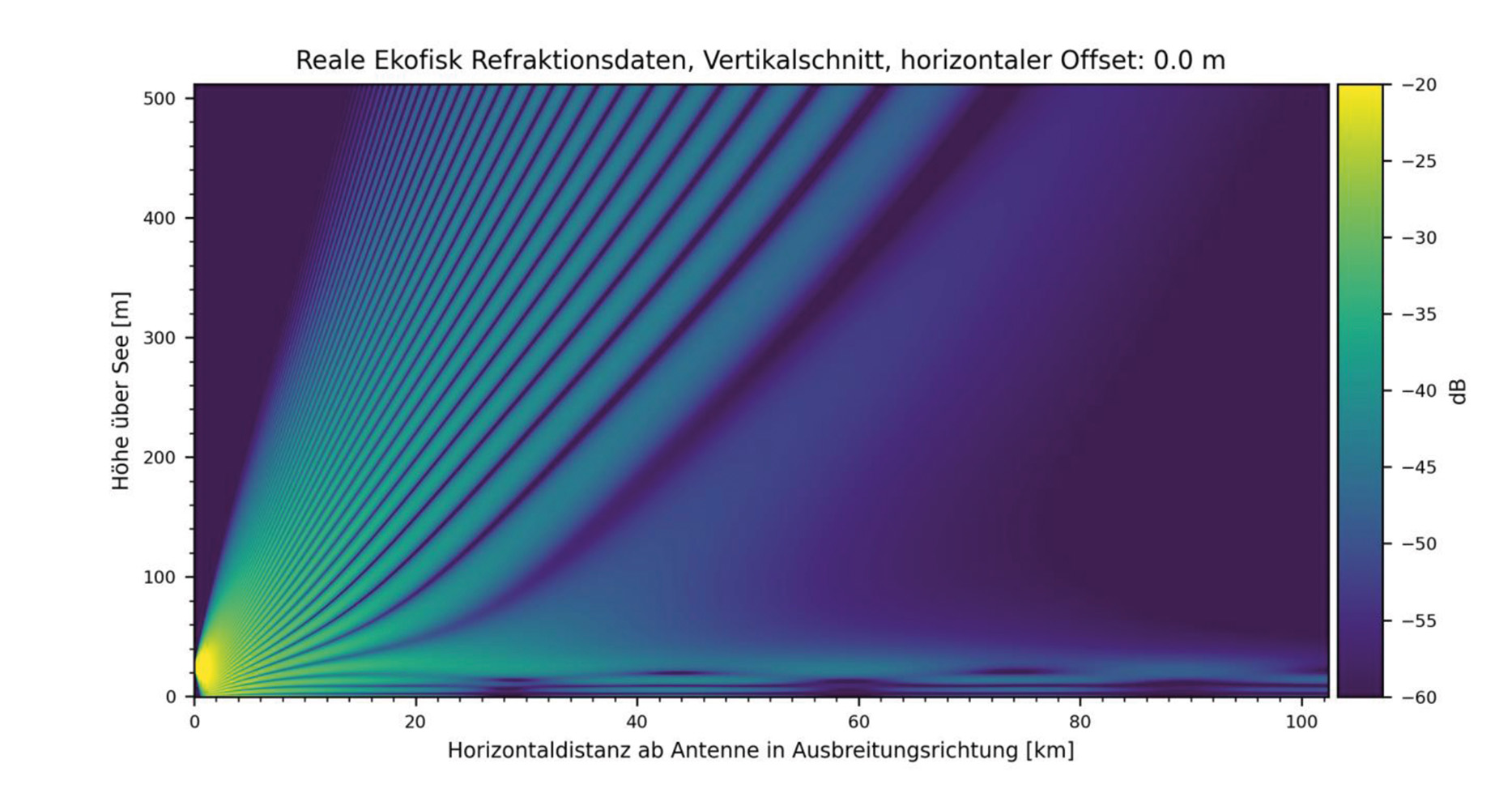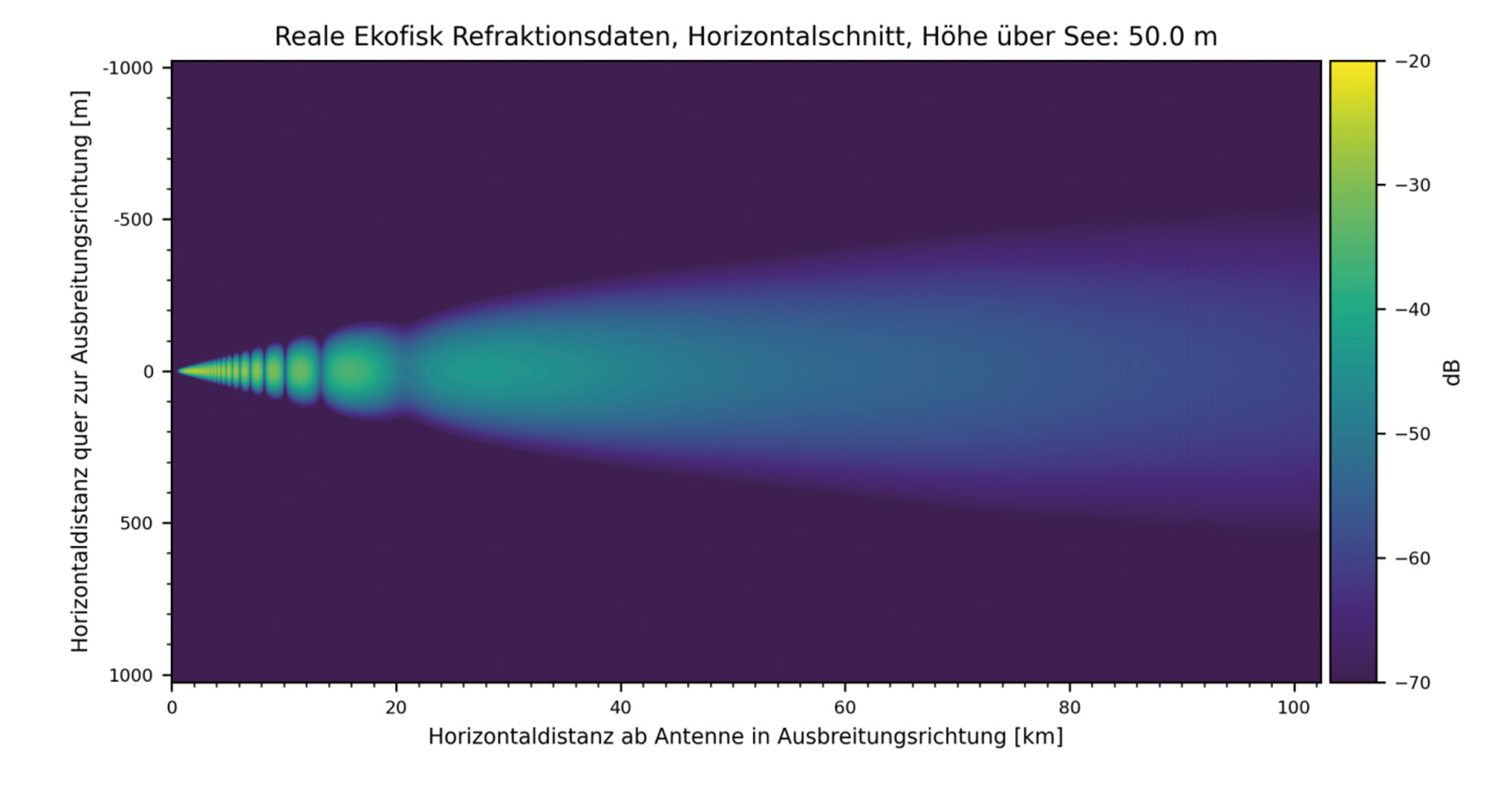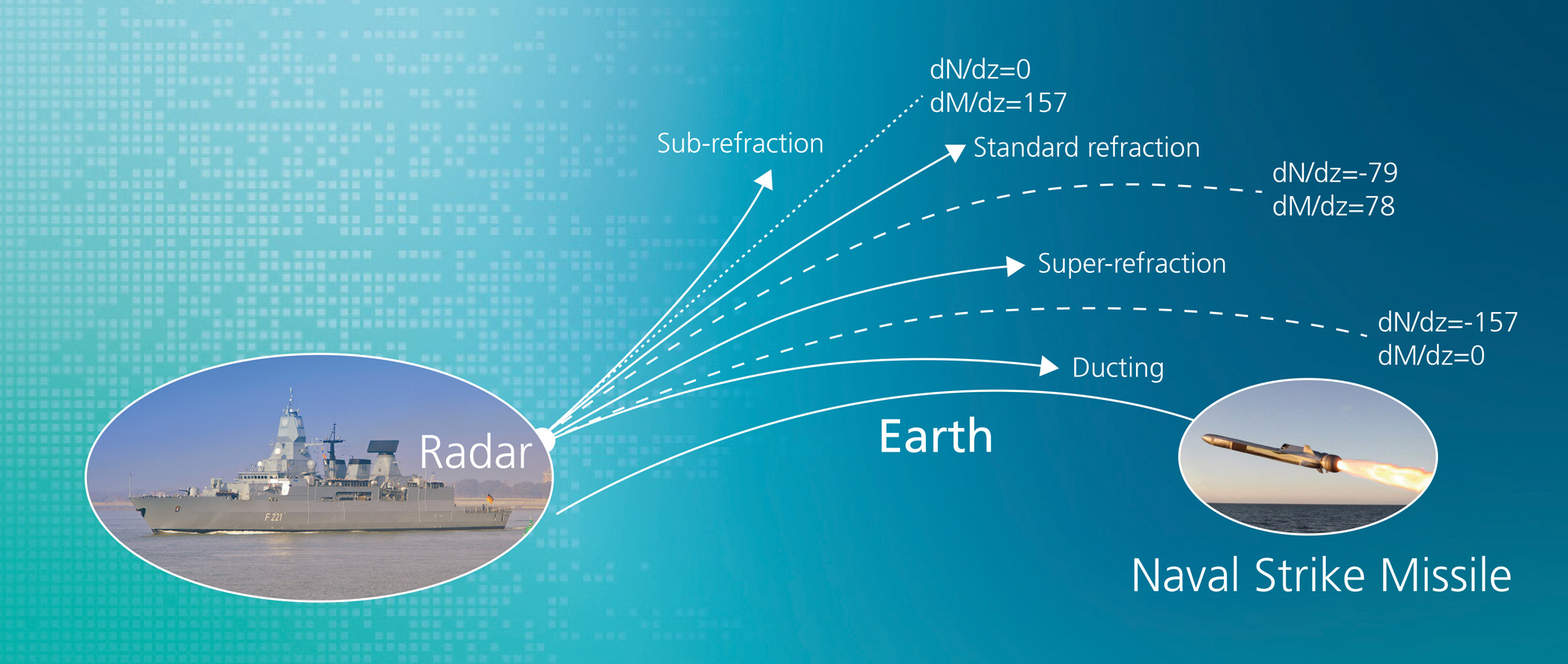How do radar waves propagate over the sea?



Over warm seas, layers of water vapor are a quite common phenomenon, which can severely affect the propagation of radar waves. A novel modeling technique now makes it possible to determine the three-dimensionnal propagation for the first time.
Are ships, planes, or missiles approaching? To answer this question, both civilian and military maritime and aviation sectors rely on radar systems. The frequencies of the emitted radar waves typically range from one to ten gigahertz: In this range, electromagnetic radar waves propagate similarly to light rays, traveling in straight lines. Usually, it should be added: Depending on the water and air temperature, and particularly over warm seas like the Red Sea or the South China Sea, dense layers of water vapor often form above the water surface, causing radar waves traveling close to the water to refract towards the sea. This has various effects. In the simplest case, extended ranges are created—one can see objects beyond the horizon, similar to mirages. What initially sounds like an advantage can have negative effects, especially if one is unaware of this range extended returns.
In more extreme cases, radar beams are refracted back to the water surface, where they are reflected – this process may repeat multiple times. Similarly, these wave-guiding layers can form at a certain height above the sea. The result of such an »elevated duct« is that sea-skimming missiles – anti-ship missiles flying close to the sea surface – can hide above or below these mirages, making them difficult to detect with radar. This happened with the Russian missile cruiser »Moskva,« which was sunk by two such Ukrainian weapon systems. Even small pirate boats can hide from radar in these areas.
Simulation of Radar Visibility in Three Dimensions
The German Navy has a strong interest in simulating and better understanding the radar visibility of missiles or boats – ideally with respect to the specific weather conditions in tropical seas. It should be noted that simple methods already exist to calculate radar propagation over the sea, e.g., the »parabolic equation method« (PEM) is a widely used calculation method. However, with this method, radar waves can only be calculated in the direction of propagation – in other words, in the two dimensions of propagation direction and height.
Researchers at the Fraunhofer Institute for High Frequency Physics and Radar Techniques (FHR) are now replacing this rudimentary model with a three-dimensional simulation that incorporates external weather data, similar to the PEM. To model how radar waves propagate in an inhomogeneous environment, the researchers use the »plane wave approximation«: They decompose the radar waves emitted by the antenna into plane waves and analyze them using Fourier optics. The result is three-dimensional field distributions that, for the first time, show how radar waves propagate in three-dimensional space under specific weather conditions. This provides significantly more insight into the physics of propagation over the sea than previous 2D approaches.
In addition to vertical cross-section plots known from the PEM, horizontal or transverse cross-sections of the field distribution can also be evaluated from the data. The resulting images are characterized by stripes, which are created by constructive or destructive interference as radar waves reflected from the water surface overlap with direct beams. Areas that are not illuminated by radar waves are particularly relevant, as the radar is effectively »blind« in these regions.
Outlook: Challenges of Waves
The developed modeling algorithm also serves as a basis for investigating and understanding the impact of water waves on the reflection of radar signals. Besides the swells caused by storms hundreds of kilometers away, there are capillary waves, which are wave structures on the centimeter scale. These waves can be one to two orders of magnitude smaller than radar wavelengths or two to three orders of magnitude larger. The models allow for calculations of how water waves affect the reflection and propagation of radar waves over the sea, as well as at transitions to islands or land, where atmospheric transitions are much more complex than over water. The main challenge lies in the high computational effort required for statistically reliable statements: here, the use of modern graphics cards with high computational power could be helpful.